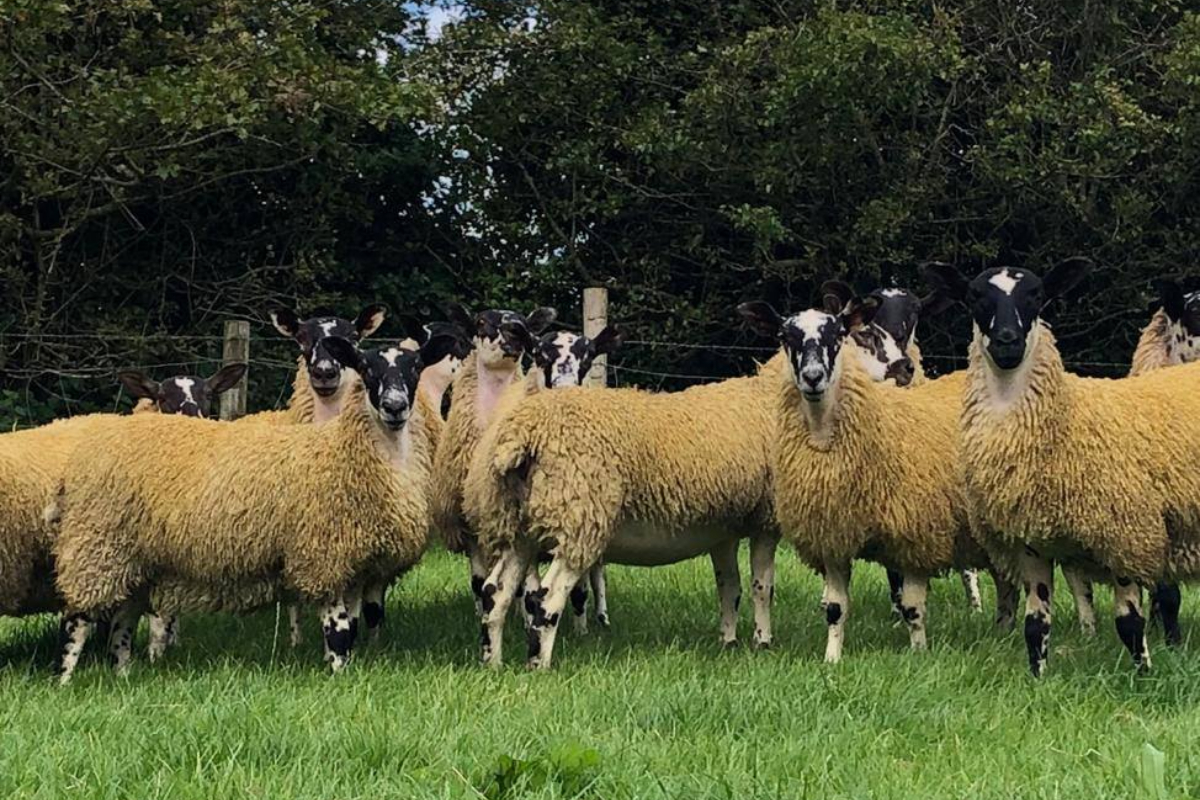As part of this week’s sheep farming in Ireland segment, That’s Farming speaks to Joe Scahill, a 600-ewe farmer, sheep-shearer and mobile dipping service-provider in Mayo.
That’s Farming caught up with Joe Scahill this week, farmer of 600 ewes at Prospect, Westport, Co. Mayo. Joe had his hands full, quite literally.
However, he has no shortage of help from his wife, Cathy, and his children, Lisa, Kate, Joseph and Seán.
Kate and Lisa are attending college online, while Joseph and Seán are in fifth year and TY, respectively.
Having family around has been useful to Joe and the farm as labour has been spread across those available. This enterprise has always been a family farm.
“My father always farmed the land here. We bought some land going back years ago and gradually increased the size of the farm over time.”
“We have always kept sheep, and I have been farming here for thirty years. You do not feel the time going by,” he reminisces.

Mayo Mule and Greyface Group
Scahill is a member of the Mayo Mule and Greyface Group, a breed that is the foundation of his flock.
“Mayo-Lanark crosses are all that we keep. We have about 600 ewes. One-third are crossed with Lanark rams, to breed our own replacements. The remaining 400 ewes are crossed with a Blue Leicester ram,” he explains.
Sharing his experience with the producer’s group, Joe says, “the group provides a great service. Lambs are marketed through the group.”
Furthermore, sales take place at Ballinrobe Mart, which producer group members can book into quite easily.
“You can book in your lambs on a Monday morning through the Ballinrobe office. The lorry collects lambs at a given time on Tuesday evening or Wednesday morning in Westport.”
“Up to 400 farmers are operating this way. You drop them off, and you are back home again a half an hour later,” he adds.
By being a group member, farmers can obtain the highest prices available on any given week.
Joe points out that lower prices come from “selling off the bat, with a small number of lambs”.

Scanning rates
Importantly, accurate scanning provides figures for feed calculation and weaning rates, which are vitally for estimating inputs to the farm.
“1.5 is the weaning rate we aim for. Scanning rates for our horny ewes told us that we would have a rate of 1.7. They spend most of their time on grass,” he says.
“In contrast, our hill ewes scanned in around 1.5. We try to lamb our double ewes inside, as vermin like foxes and birds can cause losses outside,” he adds.
“We try to push the weather lambs on, to 18 to 20kg in terms of killing. Our blackface ewe lambs are kept as replacements. The mule-lambs are lambed mid-March, ahead of the blackface lambs by a week or two.”
“Going to sale, we aim to have them strong enough to breed in their first year,” he adds.

Productivity
Across the board, Joe says 2020 was a relatively good season. Meanwhile, he is halfway through this year’s yeaning.
Notably, a new disease preventative program has become a factor for increasing farm productivity levels in recent years.
“A number of years ago, we started to vaccinate sheep for toxoplasmosis and enzootic abortion as we had an outbreak. Vaccinating seems to have put that to bed. All ewes are vaccinated pre-lambing with Heptavac P now,” he makes clear.
“A preventative program using vaccines is better than fixing a problem with antibiotics later on,” he highlights.
“One ewe could suffer with enzootic abortion this year, but five or six could suffer the following year. It is highly contagious and will continue to grow in numbers that way,” he says.
“The infection cuts off the oxygen supply to the placenta. Two or three days later, the ewe aborts the lamb,” he explains.
“Wildlife like birds can pick up the disease and spread it around from farm to farm,” he makes clear.
The sale of ewe lambs takes place through the Mayo Mule and Greyface group in August and September in Ballinrobe.
Most of the weather lambs on the farm are finished and slaughtered through this group also.

Labour and cost
As a rule of thumb, sheep farming is labour intensive, but especially at this scale. Joe paints a picture of the management practices that can marginally reduce labour and improve animal welfare long-term.
“There will always be plenty of work when farming sheep. That is just the nature of the job. There is a lot of ongoing talk around reducing antibiotic usage. I am all for that myself,” Joe told That’s Farming.
He goes on to say that “to prevent these ailments like hoofrot, toxoplasmosis and enzootic abortion, you must vaccinate. However, these vaccines are very expensive”.
“Vaccinating for these diseases reduces problems down the road, but a lot of their expense lies in VAT. If the price of these vaccinations could somehow be reduced, it would encourage more farmers to use them,” he comments.
Joe explains that “the problem is sitting down and adding up the prices of these vaccines. Most farmers will find it will cost them too much money”.

Summer work
During the summer, the Westport man provides a shearing and mobile dipping service, among other things.
Shearing takes place from mid-May to mid-July. Mobile dipping “will keep us going from August to December,” Joe Scahill concluded.
From that time onwards, preparation for winter management and lambing resumes.





